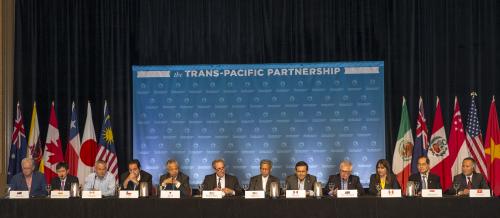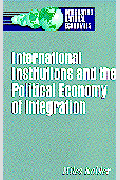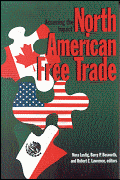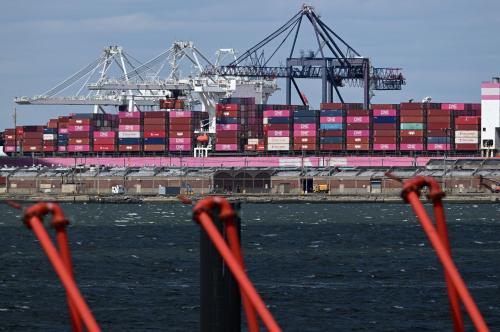Content from the Brookings Institution India Center is now archived. After seven years of an impactful partnership, as of September 11, 2020, Brookings India is now the Centre for Social and Economic Progress, an independent public policy institution based in India.
This article first appeared in the Financial Express on 15 July 2017. The views are of the author(s).
Three years ago, when the Trans Pacific Partnership (TPP) was seen as a game-changer in the evolving international trade regulatory regime, there was some discussion in India on whether the country should join TPP. Given the prevailing political constraints, it was evident that India would find it difficult to accept a number of clauses in the emerging agreement. The discussion therefore was more aspirational than real. Today, we have a different situation. With the US, the largest economy in the TPP, withdrawing from the agreement, the future of TPP is uncertain. This situation provides some relief to India because the TPP would have eroded India’s access to certain key international markets. Interestingly, the present situation provides more than just relief: It creates several important opportunities for India.
Like any new trade agreement, the TPP is a combination of initiatives such as those embodying good governance principles, i.e., transparency of procedures and regulations, timely decision, processes to facilitate transactions, standards of review, and support to improve institutional capabilities. Further, it establishes collaborative and consultative mechanisms amongst policy-makers and regulatory agencies in different countries, and provides a template with steps that improve cost-effectiveness of domestic production and trade. The agreement increases predictable market access, combining it with flexibilities to protect domestic industries if required, shows agreement on regulatory regimes in general as well as for certain specific products, and establishes a platform to discuss and seek solutions for emerging concerns and new issues. Further, the TPP covers a range of disciplines, from soft ones such as guidelines or best-effort agreement, to strong legally binding disciplines for large tariff reduction.
The TPP provides a useful template for India to facilitate domestic policy reform, promote regional or multilateral collaborative initiatives such as for regulatory coherence, and even prepare for negotiations at the regional or WTO level (a Brookings India working paper gives more detail).
In this context, it is noteworthy that India is implementing several domestic reforms to achieve good governance through initiatives such as ease of doing business, trade facilitation, self-certification, simplifying forms and processes, and introducing e-governance. These systems-oriented reforms include a focus on developing transparent due procedures and inclusive systems; help provide timely response to enquiries, requests and reviews; and improve both regulatory practices and the general work of the Government. There is an obvious overlap between India’s domestic reform process. Several parts of TPP are relevant for India’s ongoing efforts to enhance good governance, and provide a template worth consideration in the same way as the ease of doing business index is considered for effectively implementing the Make in India programme, or India is making practical efforts to improve trade-efficiency by implementing the WTO Trade Facilitation Agreement.
Likewise, TPP mentions specific issues pertaining to e-commerce, such as the legal regime required for e-commerce, online consumer protection, personal information protection, and regulation of unsolicited commercial electronic messages. Since the internet extends beyond national borders, agreement amongst nations become an important part of the regulatory regime for internet. The TPP becomes particularly useful in this context because it shows a framework that has been agreed amongst several nations. Further, with technological changes that continue to further erode the limits of national boundaries, such machine-to-machine (M2M) and 3D printing, India would need to develop its systems and approaches broadly consistent with practices in other major economies. The mechanisms and solutions in TPP provide a model for working towards greater collaboration amongst regulators of different countries and mutually learn about options to address new issues. These options could range from “soft” (e.g. guidelines) to “hard” (e.g. legislative or regulatory) requirements.
Collaborative efforts at the bilateral/regional level or the WTO are important in other areas as well, such as non-tariff measures faced by Indian exports, including standards and regulatory barriers. Collaboration and cooperation amongst nations also provides the basis for capacity building, develop mutually support initiatives, learn about methods and policies that improve domestic competitiveness, and share information on regulations and practices that lead to success cases in other countries. For these areas too, the TPP text provides a useful template to consider for collaborative arrangements amongst nations.
Interestingly, parts of the TPP and the emerging inward-looking attitude in several major economies regarding trade policies suggest a possibility also with respect to market access negotiations. India finds these negotiations difficult because opening up its markets by reducing tariffs is difficult for it, as is getting others to agree to its demand for opening up their markets for Indians going to the other territory to provide services such as software (Mode 4).
Even though the TPP embodies a much higher ambition for tariff reduction and lower for Mode 4 than what India would find comfortable, the agreement indicates possible directions for India to work out some solutions for negotiations in market access for goods and services. The TPP provides a whole range of flexibilities which arguably are new in their scope: they include, for instance, up to 30 years for implementing the agreed tariff reduction for sensitive products, or taking away the agreed market access from others if certain market opening by them is assessed to be less than what was agreed. For services, TPP results could indicate for India the possible export opportunities in areas other than Mode 4. Of course, though more thought is needed to identify and create opportunities for India in its specific context, the important point is to recognise that TPP provides a very rich template for improving domestic and external performance of India, without the onerous obligation to accepting any conditions under that agreement.
The Brookings Institution is committed to quality, independence, and impact.
We are supported by a diverse array of funders. In line with our values and policies, each Brookings publication represents the sole views of its author(s).










Commentary
Op-edTPPs for success: Here is how India can use this gamechanger agreement
July 17, 2017